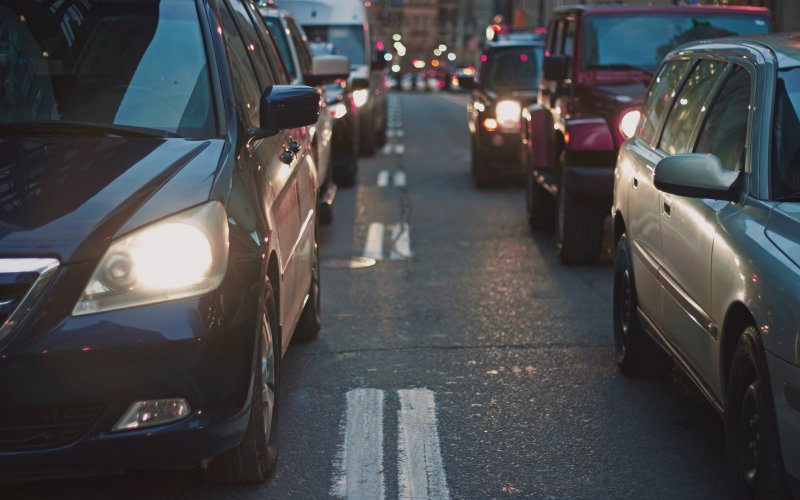Study Finds Road Traffic Exposure is Linked to a Greater Number of Asthma Related ER Visits

ALBANY, N.Y. (Nov. 21, 2022) – A recent study led by faculty in the Department of Epidemiology & Biostatistics and Environmental Health Sciences shows that high-density road traffic is associated with recurrent emergency room (ER) visits related to asthma. The results of the study are published in the journal Environmental Health.
Lead author Dr. Tabassum Insaf, based at the New York State Department of Health, explains, “This research was intended to determine the impact of road traffic on asthma morbidity in low-income populations, who often reside in places with higher levels of air pollution. We studied Medicaid recipients living within 300 meters of a high-density traffic area. We were also interested in finding out if the impact of road traffic proximity varied among different sub-groups within this population. Few studies to date have done this.”
Although air pollution is on the decline in New York, exposure to pollution from automobiles has increased even outside of metropolitan areas. As a result, even in places where air quality meets federal standards, more people are exposed to air pollution from automobiles than ever before. This pollution is composed of fine particulate matter, volatile organic compounds, nitrogen oxides, carbon monoxide, sulfur dioxide, and ammonia, along with other ultrafine and nanoparticles. These exposures may contribute to multiple health outcomes, including asthma. Beyond air pollution, high density traffic can lead to other stressors such as noise.
Those with low socio-economic status are significantly more likely to live close to major roads and highways, leading to higher levels of exposure. But even among this population, the health burden is not equally distributed. By further stratifying the study population, the authors were able to determine that those receiving cash assistance were most likely to visit the ER for asthma multiple times per year.
“Cash assistance is a measure of state-provided financial assistance and serves as a proxy for socio-economic status within the Medicaid population,” explains Temilayo E. Adeyeye.
The results of the study show that those receiving such assistance were more likely to experience asthma complications that required an ER visit at all levels of road traffic exposure.
“Our findings suggest that even within this primarily low-income study population, socio-economic disparities persist. These may not be apparent in health studies that use Medicaid enrollment as a proxy for low income,” says Adeyeye.
Racial demographics, as well as disability status, also appear to impact the magnitude of the effects of exposure to high-density traffic. Those who identified as Black, Hispanic, or “other” race/ethnicity experienced a greater impact than those of other racial/ethnic backgrounds under study. Males were also more susceptible than females. Overall, those at highest risk of recurrent ER visits for asthma were males between 18 and 44 years of age who received cash assistance and supplemental security income.
“Despite the significant attention given to asthma in inner city neighborhoods, the results of our study suggest that environmental risk factors such as local traffic can have a bigger impact among the most vulnerable,” Insaf says. “Understanding where this risk is greatest will allow policy makers to target investment of resources to supporting policies that encourage a transition to cleaner transportation options.
Near road-way pollution exposure can also be mitigated through efforts such as indoor air filtration, relocation of air intakes, and the use of trees and shrubs to serve as vegetative barriers, and continued investment in clean diesel programs especially in communities that are affected the most. New York State is currently implementing provisions of the Climate Leadership and Community Protection Act, which commits the state to reducing greenhouse gas emissions in a manner that ensures that all New Yorkers, including the most vulnerable, experience the benefits.”


